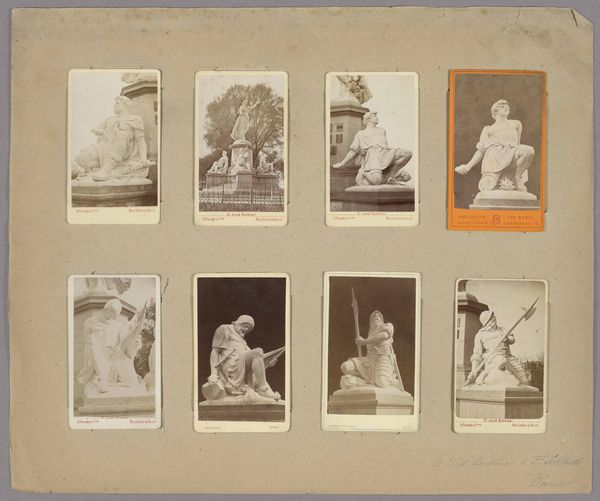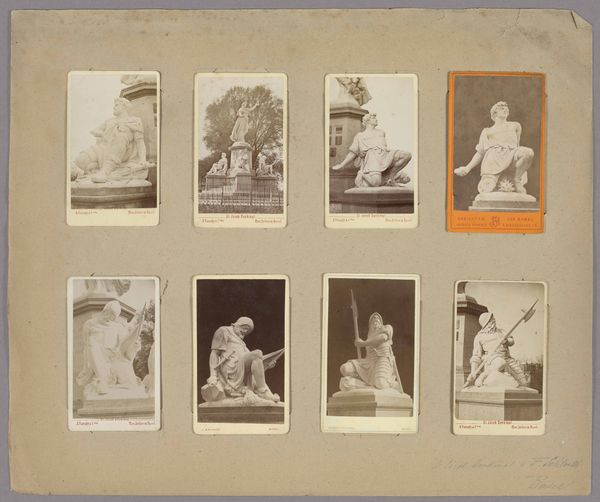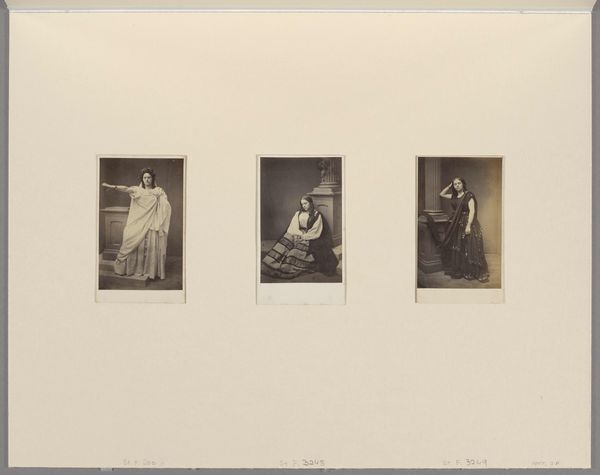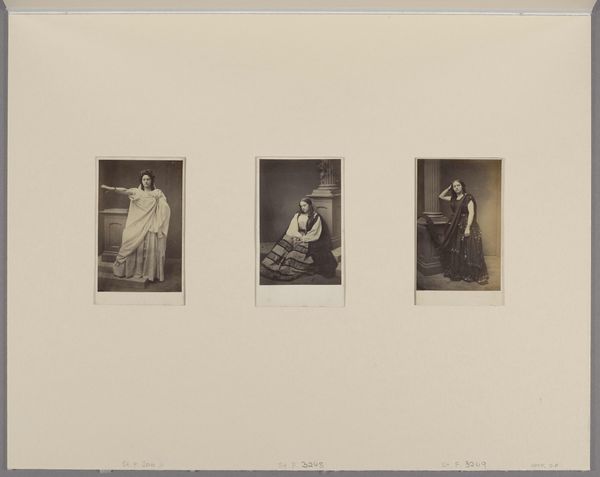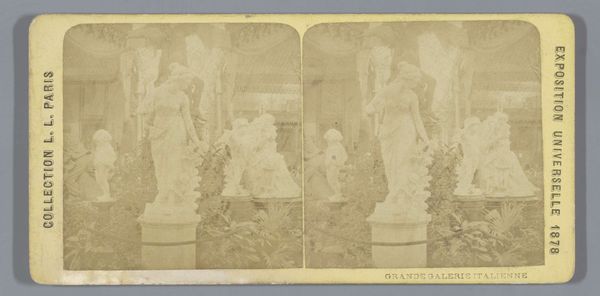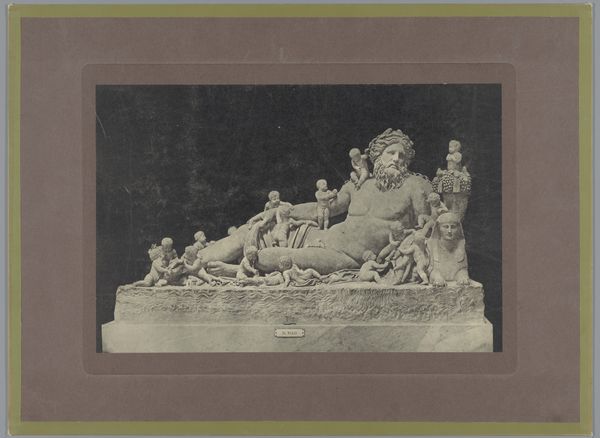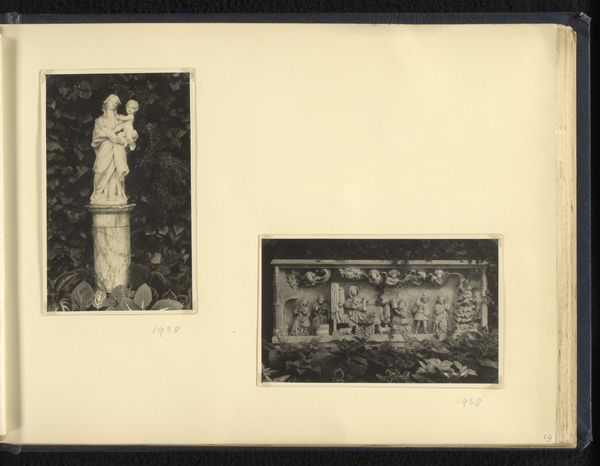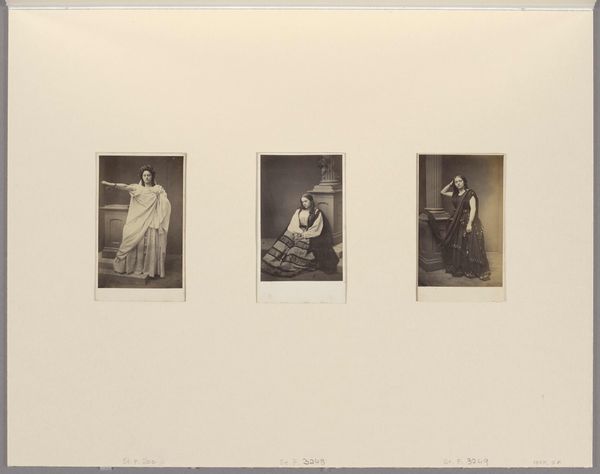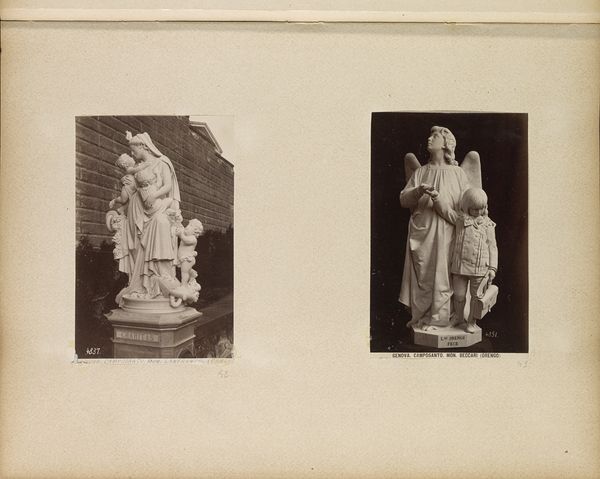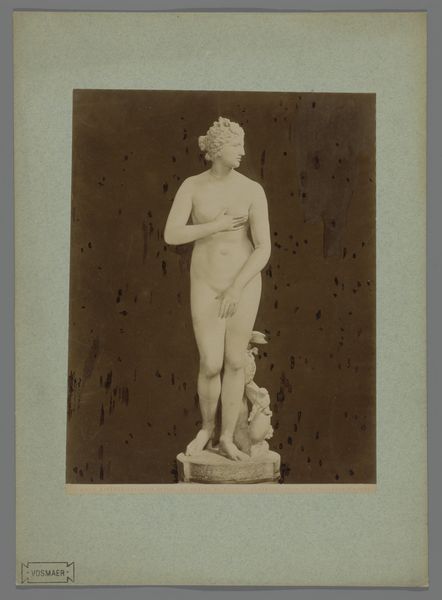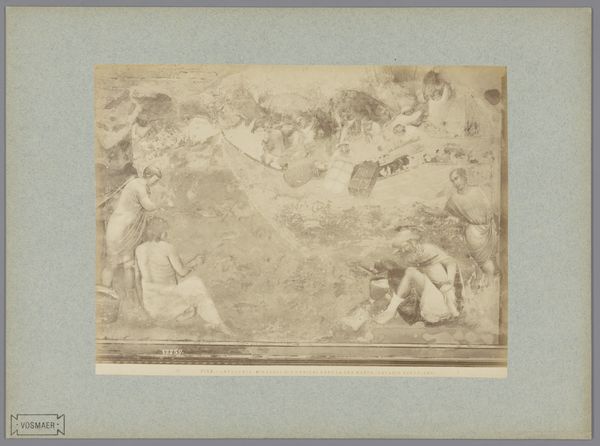
albumen-print, paper, photography, sculpture, albumen-print
#
albumen-print
#
portrait
#
16_19th-century
#
landscape
#
paper
#
photography
#
sculpture
#
albumen-print
Copyright: Public Domain
Editor: Here we have a set of albumen-print photographs of the Basel St. Jacob Monument, by A. Varady & Comp., from around 1890. I’m struck by how these photos document a monument through several fragmented close-ups; almost like a survey or study. What jumps out to you? Curator: Consider the albumen print itself, a process involving egg whites, creating a smooth surface to hold the photographic image. The commodification of albumen is as relevant as the sculptures depicted. Think about the labor involved in producing these prints – collecting eggs, preparing the emulsion, and meticulously printing each image. How does the accessibility of these mass-produced photographs, versus the grand, singular monument itself, affect public perception and access to this history? Editor: That’s interesting, I hadn’t considered the actual production process of the photos. It's like a miniature factory on paper. So, in effect, these photos are turning a monumental sculpture into something reproducible, accessible, and therefore, consumable? Curator: Precisely. Consider the monument as the "original" object, imbued with aura and authority, while the prints become dispersed, fragmented, and available for consumption. And how that might speak to broader societal shifts occurring around that time. What social functions are at play? Editor: Hmmm, it seems that mass producing the sculpture and selling it makes art accessible, yet the monument’s importance, even its authority, shifts through these multiple photographic lenses. Curator: Indeed. A shift not only in how we view monuments, but how art and history are processed, manufactured, and consumed. Editor: It really makes you think about accessibility and authenticity in art history, something I definitely need to reflect upon. Curator: Exactly, I'm glad that it offered an entry point to reflect on the monument, photography, and its implications through the production process.
Comments
No comments
Be the first to comment and join the conversation on the ultimate creative platform.

